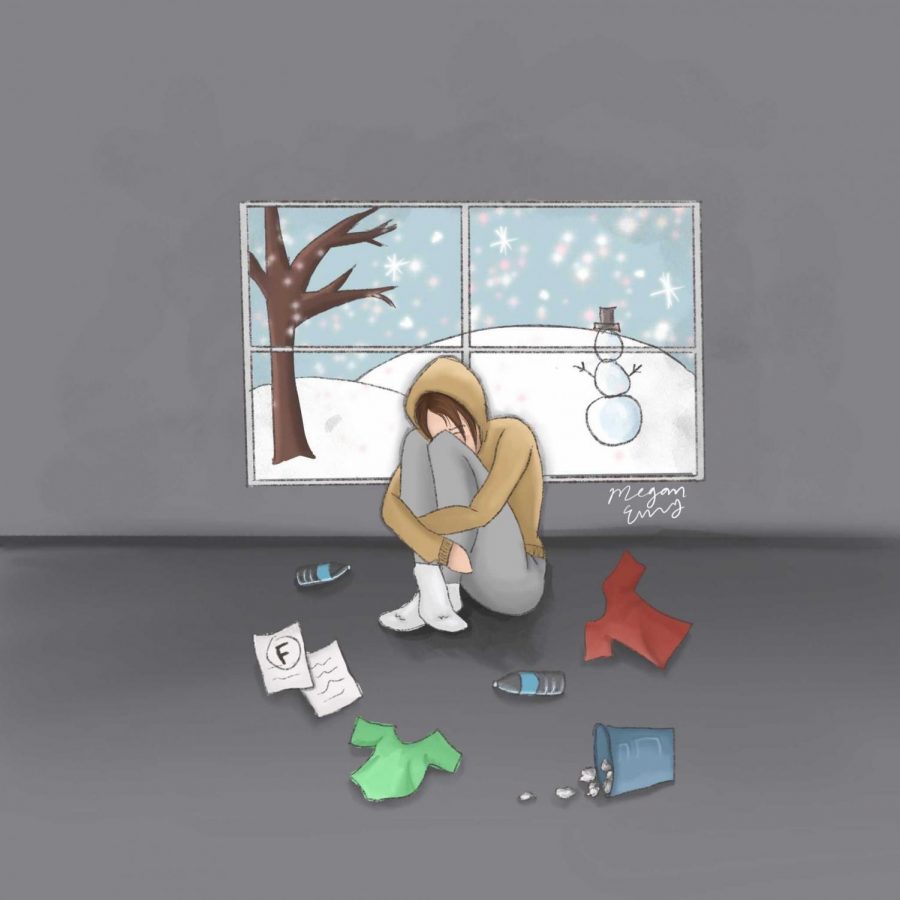Changing seasons, changing moods
Changing of seasons leads to Seasonal Affective Disorder
The stress of the holidays leads many people to feel like they must put on a “show” for their families and friends: a photograph perfect, generic, happy, holiday season. It can be harder to find joy in the winter; many feel drained, hopeless and in some cases, depressed. Those who feel this way are not alone, as about 4-6% of people may have winter depression, and another 10-20% may have mild Seasonal Affective Disorder (SAD) according to the American Academy of Family Physicians (AAFP) Foundation.
SAD is a type of depression that is related to the changing of the seasons, and it usually begins and ends around the same time each year, starting in the fall and continuing throughout the winter months. SAD leads to low energy, problems with sleeping, feeling sluggish or agitated, social withdrawal and problems at school or work.
The causes of SAD are all related to a reduced level of sunlight in the fall and winter months. One’s circadian rhythm, or the body’s internal clock, can be disrupted by the drop in sunlight, causing winter-onset SAD and feelings of depression. Another reason is the drop in serotonin levels; this is a brain chemical or neurotransmitter that plays a role in mood stabilization. When exposed to sunlight, the retina is stimulated and tells the brain to release serotonin. Inevitably, when there is less sunlight, there is less serotonin, meaning mood levels drop and a person is more distracted and less calm. Melatonin levels also come into play with SAD because the change in the seasons can disrupt the body’s level of melatonin, which takes part in sleep patterns and mood.
Some signs of SAD include: feeling depressed most of the day, losing interest in activities, low energy, problems sleeping, difficulty concentrating and the heightened presence of other mental health disorders.
Seasonal depression can be mild, but it can also become extremely serious when it lasts for a prolonged period of time. Mental health is a priority; any level of depression or anxiety should be taken into account, and one should seek help from professionals. It is not uncommon for parents or caregivers of teens to misunderstand the signs of SAD, like an agitated mood and isolation. It’s important that teens, and all people, feel comfortable talking about how they feel, and that they feel as though they can get help from an adult. Searching for the signs of a mental health disorder is also a necessity. Looking for the signs and providing a safe space for students is vital to support those struggling. Treatment should always be prescribed by a mental health professional; some treatments include light therapy, phototherapy and talk therapy.
When feeling like the winter season is kicking one in the gut, there are a couple of tips to keep productive and present. Adding brightness to a space and making it a priority to exercise and get outside is crucial when there is less sunlight. Making plans with family and friends one is comfortable with, or taking time to detox and relax are also necessary for a healthy lifestyle and the holiday season. Never be afraid to ask for help, or to be having a rough time, because life isn’t easy— especially in the stress-heightened holiday season. If you or someone you care for are struggling with depression or any mental and/or substance use disorders, please call 1-800-662-HELP (4357), or seek help from a mental health professional.



